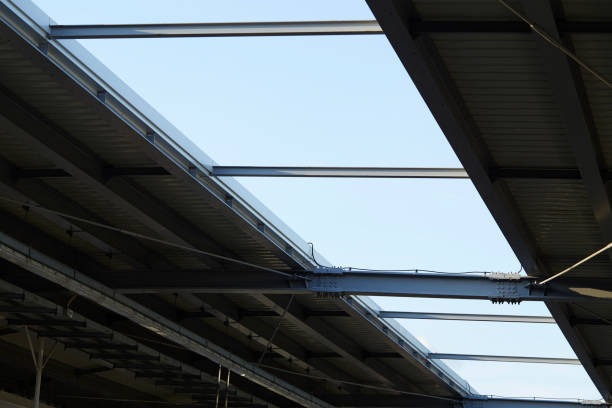Mastering Soil Hydration: A Comprehensive Plant Care Strategy

The Foundation of Thriving Gardens and Crops
Successful plant cultivation hinges on understanding and controlling soil water dynamics. The delicate balance between adequate hydration and proper drainage creates the optimal environment where plants can access nutrients, develop robust root systems, and achieve maximum growth potential. This comprehensive approach to soil hydration management transforms ordinary gardens into productive, resilient growing spaces.
Understanding Water’s Multifaceted Role in Plant Biology
Soil water serves multiple critical functions beyond basic plant hydration. Acting as a transport medium, water carries dissolved minerals and nutrients from soil particles to plant roots, facilitating the complex biochemical processes essential for healthy growth.
Nutrient Transport Mechanisms
Water creates a solution that dissolves soil-bound nutrients, making them bioavailable to plant root systems. This process, known as nutrient mobilization, becomes compromised when soil moisture drops below optimal levels, effectively starving plants even in nutrient-rich environments.
Cellular Function Support
Adequate soil moisture maintains turgor pressure within plant cells, supporting structural integrity and enabling efficient photosynthetic processes. Well-hydrated plants demonstrate superior disease resistance and stress tolerance compared to their water-stressed counterparts.
Hydraulic Dynamics in Soil Systems
Understanding how water behaves in soil environments enables more effective irrigation strategies and prevents common watering errors.
Primary Water Movement Patterns
This downward movement helps prevent waterlogging in well-draining soils while potentially causing nutrient leaching in sandy conditions.
This horizontal distribution mechanism ensures water availability across root zones and maintains soil moisture between irrigation cycles.
Evapotranspiration Circulation Water continuously cycles between liquid and vapor phases within soil air spaces. This natural circulation pattern influences moisture distribution and affects overall soil climate conditions.
Soil Classification and Water Management Strategies
Different soil compositions require tailored hydration approaches to optimize plant performance while preventing water-related problems.
Heavy Clay Environments
Clay-dominant soils excel at moisture retention due to their fine particle structure and high surface area. However, this advantage becomes problematic when drainage is inadequate, leading to anaerobic conditions that damage root systems.
Management Approach:
- Implement raised bed systems to improve drainage
- Add organic amendments to enhance soil structure
- Monitor moisture levels carefully to prevent overwatering
Sandy Soil Challenges
Coarse-textured sandy soils drain rapidly, creating challenges for maintaining consistent moisture levels. While these soils rarely suffer from waterlogging, they require frequent irrigation and careful nutrient management.
Management Approach:
- Install efficient drip irrigation systems
- Apply organic matter to improve water retention
- Schedule frequent, shallow watering sessions
Balanced Loam Conditions
Loamy soils offer the ideal combination of drainage and retention characteristics, supporting healthy root development while preventing both drought stress and waterlogging complications.
Management Approach:
- Establish deep, infrequent watering schedules
- Maintain organic matter levels through composting
- Monitor seasonal moisture variations
Advanced Moisture Assessment Techniques
Accurate moisture evaluation forms the cornerstone of effective soil water management, preventing both drought stress and overwatering damage.
Physical Assessment Methods
Tactile Evaluation Technique Collect soil samples from multiple depths within the root zone (typically 4-8 inches below surface level):
- Optimal Moisture: Soil maintains loose aggregation when squeezed but breaks apart when prodded
- Excessive Moisture: Soil forms sticky, malleable masses that leave residue on hands
- Insufficient Moisture: Soil appears dusty and cannot hold any cohesive shape
Electronic Monitoring Solutions
Capacitive Technology These sophisticated sensors measure dielectric properties of soil, providing accurate moisture readings without direct soil contact. Their digital displays offer real-time data and resist corrosion better than traditional resistance-based systems.
Time Domain Reflectometry (TDR) Advanced TDR systems send electromagnetic pulses into soil and calculate moisture content based on signal transmission speed. While initially expensive, these systems provide laboratory-grade accuracy for professional applications.
Smart Monitoring Networks
Contemporary agricultural and horticultural operations increasingly rely on wireless sensor networks that continuously monitor soil conditions and environmental factors. These integrated systems can automatically trigger irrigation cycles, send smartphone alerts, and generate detailed moisture reports for analysis.
Plant-Specific Hydration Requirements
Different plant categories have evolved unique water utilization strategies, requiring customized moisture management approaches for optimal results.
Vegetable Production Systems
Leafy Crops (Lettuce, Spinach, Kale): Require consistent soil moisture at 70-85% field capacity throughout growing seasons. These shallow-rooted plants benefit from frequent, light irrigation applications that maintain steady moisture without causing root zone saturation.
Fruiting Vegetables (Tomatoes, Peppers, Eggplant): Perform optimally with cyclic moisture patterns—adequate water during fruit development phases followed by slightly drier periods that concentrate flavors and prevent splitting.
Root Vegetables (Carrots, Radishes, Potatoes): Demand deep, consistent moisture penetration to support proper root development.
Perennial Plant Management
Established Trees and Shrubs: Benefit from deep, infrequent irrigation that encourages extensive root system development. Weekly deep watering typically surpasses daily shallow applications for mature woody plants.
Newly Planted Specimens: Require careful attention during establishment periods, with more frequent watering concentrated in the immediate root ball area while gradually expanding irrigation zones as roots spread.
Turfgrass Hydration Strategies
Healthy lawns thrive under irrigation regimes that promote deep root penetration rather than surface root concentration. Deep, weekly watering sessions generally produce more resilient turf than frequent shallow applications.
Strategic Irrigation Implementation
Effective watering techniques maximize water efficiency while promoting optimal plant health and minimizing environmental impact.
Timing Optimization
Early Morning Application (5:00-9:00 AM):
- Minimizes evaporation losses
- Reduces foliar disease development by allowing leaves to dry quickly
Evening Considerations: While sometimes necessary during extreme heat periods, evening irrigation can promote fungal diseases if foliage remains wet overnight.
Water Delivery Methods
Precision Drip Systems: Deliver water directly to root zones with minimal waste, reducing weed germination and conserving water resources. These systems work particularly well for vegetable gardens and container plantings.
Soaker Hose Networks: Provide gentle, even water distribution along planting rows while allowing soil infiltration at natural rates. Ideal for perennial beds and established garden areas.
Sprinkler Considerations: While convenient for large areas, overhead sprinklers can waste water through evaporation and may promote foliar diseases. Use primarily for lawn irrigation and when other methods aren’t practical.
Mulching for Moisture Conservation
Strategic mulch application significantly improves soil moisture retention while providing additional benefits:
Organic Mulch Options:
- Shredded bark: Long-lasting, attractive, gradually improves soil
- Straw: Excellent for vegetable gardens, decomposes quickly
- Compost: Adds nutrients while conserving moisture
- Leaf mold: Free resource that improves soil structure
Application Guidelines: Apply 2-4 inch layers around plants, maintaining 2-3 inch gaps around plant stems to prevent pest and disease issues.
Troubleshooting Common Hydration Problems
Recognizing and addressing moisture-related issues prevents plant health decline and crop losses.
Overwatering Consequences
Root Rot Development: Excessive soil moisture creates anaerobic conditions that kill beneficial soil microorganisms and promote pathogenic fungi. Affected plants show yellowing leaves, stunted growth, and eventual collapse.
Nutrient Leaching: Constant water movement through soil carries essential nutrients below root zones, creating deficiency symptoms despite adequate fertilization programs.
Solution Strategies:
- Improve soil drainage through amendments or raised beds
- Adjust irrigation frequency and duration
- Install drainage systems in persistently wet areas
Drought Stress Management
Early Warning Signs:
- Wilting during cooler parts of the day
- Leaf curling or rolling
- Premature fruit drop or flower abortion
- Reduced plant vigor and growth rates
Recovery Protocols:
- Gradually increase soil moisture rather than flooding
- Apply organic mulch to conserve existing moisture
- Consider temporary shade structures during extreme heat
Technology Integration for Modern Gardens
Contemporary moisture management benefits from technological advances that automate monitoring and irrigation processes.
Smart Controller Systems
Weather-Based Irrigation: Advanced controllers access local weather data and adjust irrigation schedules based on rainfall forecasts, temperature patterns, and evapotranspiration rates.
Sensor Integration: Modern systems connect with soil moisture sensors, automatically initiating irrigation cycles when predetermined moisture thresholds are reached.
Mobile Application Management
Smartphone apps enable remote monitoring and control of irrigation systems, providing convenience and ensuring consistent plant care during travel periods.
Data Analytics Platforms
Professional operations increasingly utilize cloud-based platforms that analyze historical moisture data, identify optimization opportunities, and predict irrigation needs based on weather patterns and plant growth stages.
Seasonal Management Protocols
Effective soil moisture management adapts to changing seasonal conditions and varying plant requirements throughout the year.
Spring Activation
Soil Assessment: Test soil moisture levels as growing seasons begin, avoiding cultivation activities in waterlogged conditions that can damage soil structure.
Gradual Irrigation Increases: Slowly increase watering frequency as plants emerge from dormancy and temperature patterns stabilize.
Summer Intensification
Heat Stress Prevention: Monitor soil moisture more frequently during extreme temperature periods, potentially increasing irrigation frequency while maintaining deep watering principles.
Evaporation Mitigation: Expand mulch coverage and consider temporary shade structures for sensitive plants during heat waves.
Fall Transition
Gradual Reduction: Slowly decrease irrigation frequency as plant growth rates decline and natural rainfall typically increases in many regions.
Winterization Preparation: Ensure adequate soil moisture before ground freezing while avoiding waterlogged conditions that can damage plants during freeze-thaw cycles.
Winter Maintenance
Evergreen Care: Continue monitoring moisture levels for evergreen plants and newly planted specimens, providing supplemental irrigation during dry winter periods when soil isn’t frozen.
Sustainable Water Management Practices
Implementing environmentally responsible irrigation practices conserves water resources while maintaining productive growing systems.
Rainwater Harvesting
Collection Systems: Install gutters and downspouts to capture roof runoff, storing water in barrels or cisterns for later irrigation use.
Storage Considerations: Use covered containers to prevent mosquito breeding and algae growth while maintaining water quality.
Greywater Utilization
Safe Applications: Properly filtered greywater from laundry and bathroom sinks can supplement irrigation water for non-edible plants when local regulations permit.
Drought-Tolerant Landscaping
Native Plant Selection: Choose regionally adapted plants that require minimal supplemental irrigation once established, reducing long-term water demands.
Conclusion
Mastering soil moisture management requires understanding complex interactions between soil properties, plant biology, and environmental conditions. Success depends on implementing systematic monitoring approaches, selecting appropriate irrigation methods, and adapting strategies to seasonal variations and plant-specific requirements.
The integration of modern technology with traditional horticultural knowledge creates opportunities for more precise, efficient moisture management that benefits both plant health and environmental sustainability. Through careful observation, consistent monitoring, and adaptive management strategies, gardeners and farmers can create thriving growing systems that maximize productivity while conserving precious water resources.
Regular assessment of soil conditions, combined with strategic irrigation timing and water conservation techniques, transforms the challenge of moisture management into a fundamental tool for achieving exceptional growing results across diverse agricultural and horticultural applications.



